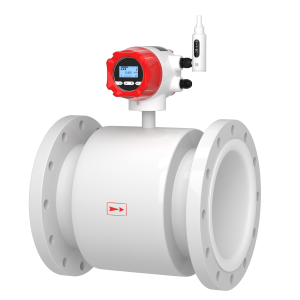Pipeline Electromagnetic Flowmeter Pricing
Learn what affects cost and how to choose the right model.
Introduction
Many users choose a pipeline electromagnetic flowmeter model first, then ask about the price. Others want to know the price range before they check the details. In this guide, we give a brief overview of electromagnetic flowmeters and explain the factors that affect their pricing. In addition, we use simple language and clear structure for easy reading.
What is an Electromagnetic Flowmeter?
Electromagnetic flowmeters were developed in the 1950s and 1960s. They use Faraday’s Law to measure the flow of conductive fluids. In other words, they sense the force generated when fluid passes through a magnetic field. This method gives accurate results.
Selection and Installation Requirements
1. Installation Site Requirements
- First, install the sensor where fluid separation is unlikely. Do not choose sites with incomplete mixing.
- Then, place the sensor downstream of the reaction point in chemical pipelines.
- Avoid areas with negative pressure and high vibrations.
- Also, keep the sensor away from large motors and transformers.
- Ensure the sensor has its own ground and stays away from corrosive gases.
- Maintain an ambient temperature between -25°C and 60°C and relative humidity between 10% and 90%. Moreover, avoid direct sunlight.
- Finally, make sure the liquid has the required conductivity and uniform distribution by installing the sensor after chemical injection points.
2. Straight Pipe Requirements
- For elbows, T-junctions, reducers, and open valves, use an upstream straight pipe of at least 5 times the pipe diameter (5D).
- For partially open valves, use an upstream straight pipe of 10D.
- Then, use a downstream straight pipe of at least 3D.
- If measuring mixed fluids, ensure the mixing point is at least 30D upstream of the sensor.
3. Installation Position & Flow Direction
- You can install the sensor horizontally, vertically, or at an angle.
- For solid-liquid mixtures, install vertically with upward flow to prevent sediment buildup.
- For horizontal setups, keep the electrode axis parallel to the ground to avoid gas bubbles or sediment issues.
- Always maintain upward flow in vertical installations to prevent settling of heavy particles.
4. Grounding Requirements
- Ground the sensor independently with a resistance below 100Ω.
- For remote flowmeters, ground the sensor and transmitter at the same location.
How Much Does a Pipeline Electromagnetic Flowmeter Cost?
After you select the model, many users ask about the price. The cost depends on several factors. For example, pipe diameter and material affect the cost. Also, electrode and liner materials—such as stainless steel, PTFE, or rubber—play a role. In addition, measurement accuracy and signal output type (like 4-20mA, HART, or Modbus) matter. Finally, extra features like remote displays or explosion-proof enclosures can change the price.
Recommended Manufacturer: Hangzhou Meacon
Hangzhou Meacon specializes in pipeline electromagnetic flowmeters. They offer customized model selection and technical support through over 20 service offices nationwide. In addition, they provide one-on-one consultations and detailed quotations. This ensures that you get the best value for your investment.
Why Choose Hangzhou Meacon?
- Industry Expertise: They have many years of experience in flow measurement.
- Comprehensive Support: They offer 24/7 technical assistance and personalized consultations.
- Quality Assurance: Their products meet strict industrial standards.
Conclusion
In summary, proper selection and installation of pipeline electromagnetic flowmeters are essential. You must consider site requirements, straight pipe length, installation position, and grounding. Also, pricing depends on various factors.
For competitive pricing and expert advice, contact Hangzhou Meacon today.
